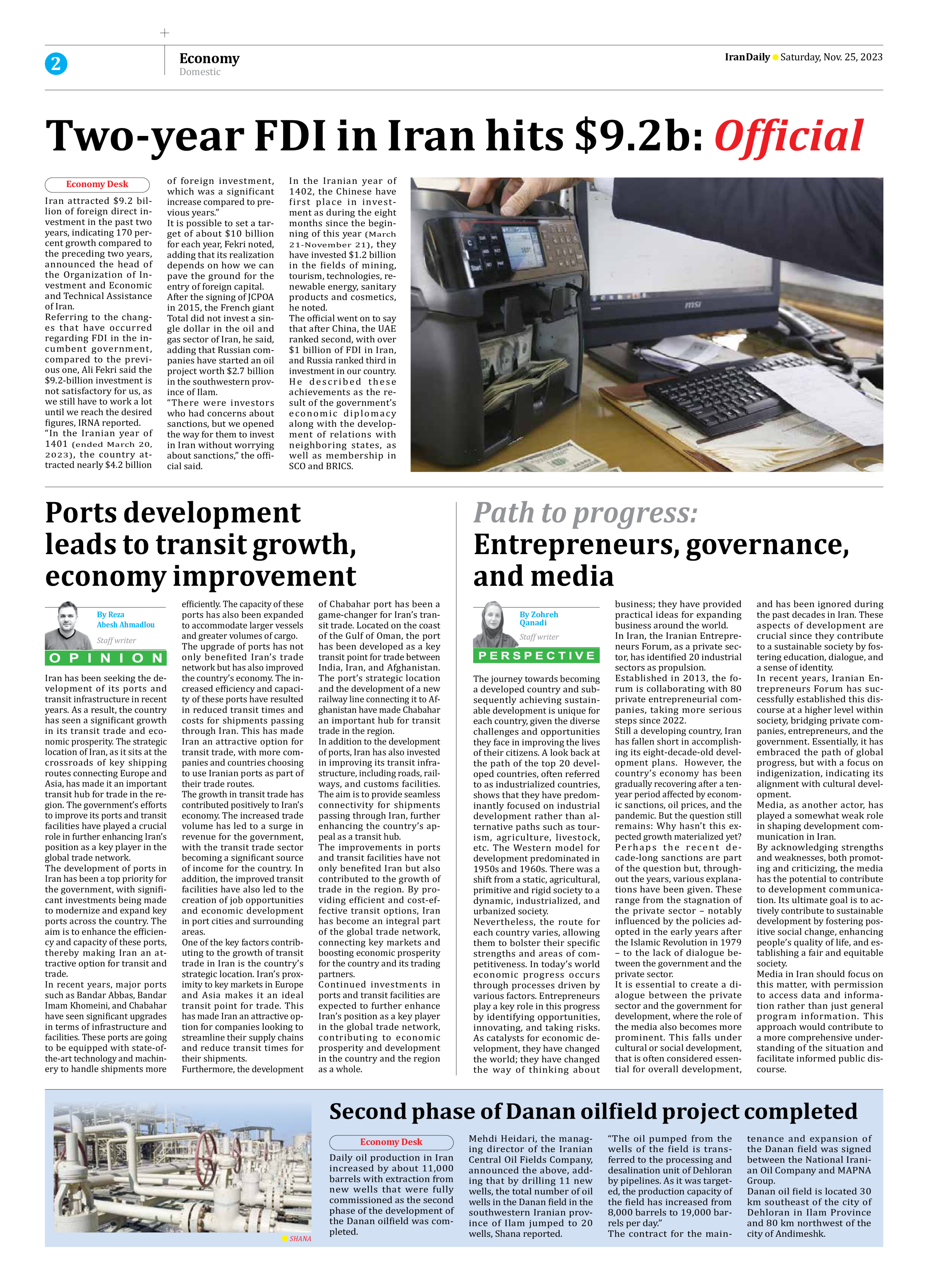
Ports development leads to transit growth, economy improvement
By Reza Abesh Ahmadlou
Staff writer
Iran has been seeking the development of its ports and transit infrastructure in recent years. As a result, the country has seen a significant growth in its transit trade and economic prosperity. The strategic location of Iran, as it sits at the crossroads of key shipping routes connecting Europe and Asia, has made it an important transit hub for trade in the region. The government’s efforts to improve its ports and transit facilities have played a crucial role in further enhancing Iran’s position as a key player in the global trade network.
The development of ports in Iran has been a top priority for the government, with significant investments being made to modernize and expand key ports across the country. The aim is to enhance the efficiency and capacity of these ports, thereby making Iran an attractive option for transit and trade.
In recent years, major ports such as Bandar Abbas, Bandar Imam Khomeini, and Chabahar have seen significant upgrades in terms of infrastructure and facilities. These ports are going to be equipped with state-of-the-art technology and machinery to handle shipments more efficiently. The capacity of these ports has also been expanded to accommodate larger vessels and greater volumes of cargo.
The upgrade of ports has not only benefited Iran’s trade network but has also improved the country’s economy. The increased efficiency and capacity of these ports have resulted in reduced transit times and costs for shipments passing through Iran. This has made Iran an attractive option for transit trade, with more companies and countries choosing to use Iranian ports as part of their trade routes.
The growth in transit trade has contributed positively to Iran’s economy. The increased trade volume has led to a surge in revenue for the government, with the transit trade sector becoming a significant source of income for the country. In addition, the improved transit facilities have also led to the creation of job opportunities and economic development in port cities and surrounding areas.
One of the key factors contributing to the growth of transit trade in Iran is the country’s strategic location. Iran’s proximity to key markets in Europe and Asia makes it an ideal transit point for trade. This has made Iran an attractive option for companies looking to streamline their supply chains and reduce transit times for their shipments.
Furthermore, the development of Chabahar port has been a game-changer for Iran’s transit trade. Located on the coast of the Gulf of Oman, the port has been developed as a key transit point for trade between India, Iran, and Afghanistan. The port’s strategic location and the development of a new railway line connecting it to Afghanistan have made Chabahar an important hub for transit trade in the region.
In addition to the development of ports, Iran has also invested in improving its transit infrastructure, including roads, railways, and customs facilities. The aim is to provide seamless connectivity for shipments passing through Iran, further enhancing the country’s appeal as a transit hub.
The improvements in ports and transit facilities have not only benefited Iran but also contributed to the growth of trade in the region. By providing efficient and cost-effective transit options, Iran has become an integral part of the global trade network, connecting key markets and boosting economic prosperity for the country and its trading partners.
Continued investments in ports and transit facilities are expected to further enhance Iran’s position as a key player in the global trade network, contributing to economic prosperity and development in the country and the region as a whole.







